Shall we dance?
As part of our “Choré-graphique” collection, this is the perfect opportunity to talk to you about dance… And make you want to do it right from the start of the school year! What better way to convince you than to share our team's experiences with you? Salsa, Modern Jazz, Rhythmic Gymnastics, Oriental Dance, Street Jazz… Each shares their passion with you. Will you follow the movement?
As part of our “Choré-graphique” collection, this is the perfect opportunity to talk to you about dance… And make you want to do it right from the start of the school year! What better way to convince you than to share our team's experiences with you? Salsa, Modern Jazz, Rhythmic Gymnastics, Oriental Dance, Street Jazz… Each shares their passion with you. Will you follow the movement?
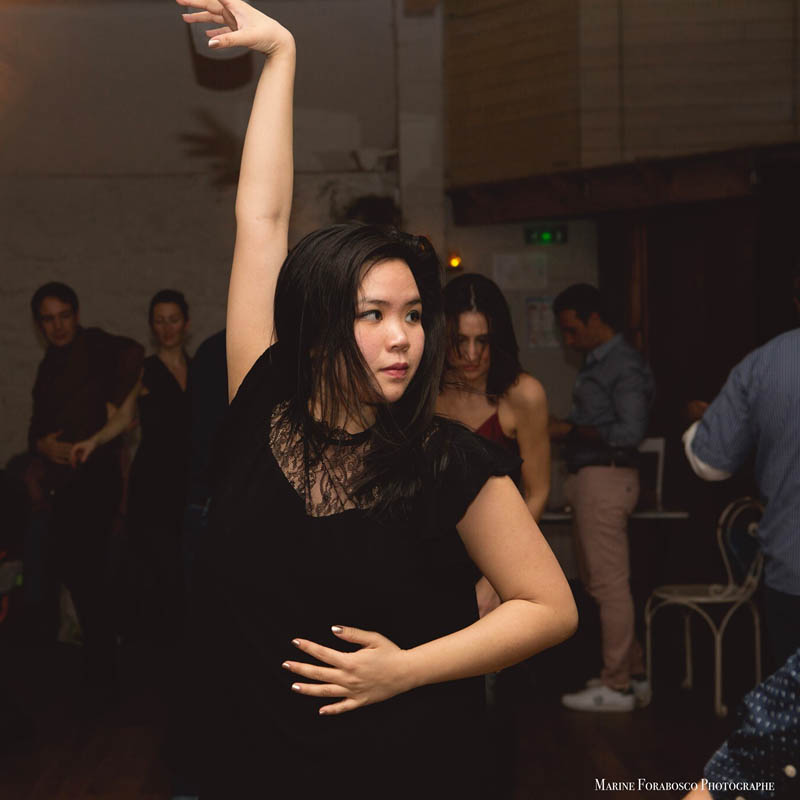
Which dance?
Puerto Rican Salsa, which was developed by the Latin American community in the United States. There are several styles, mainly that of Los Angeles and New York. We dance in a line, whereas in Cuban Salsa, we move in a circle. I started with the Mambo Salsa association. It was our Monday evening outing with the colleagues from the Les Georgettes team! I was immediately hooked. I was even my teacher Nadège's partner. At the same time, I take lessons at the Bakido Dance School with Mouaze, founder of the Paris International Salsa Congress which takes place every year, and in which, of course, I participate. I also dance as soon as a party is on the horizon, in a bar or on the banks of the Seine.
Why?
It is above all a means of expression, through movements and music, sometimes romantic, sometimes rhythmic. It allows me to practise a sport and let go. In Salsa, the woman plays with her elegance. It is enhanced by the man who guides it. We learn to adapt to different energies. I was also able to travel thanks to this dance. The workshops and festivals organized have taken me to Austria, Hungary, Croatia, etc. On the other hand, as my family does not live in France, I wanted to meet new people. Puerto Rican Salsa is very cosmopolitan, bringing together many nationalities around the same passion and offering a connection between individuals, regardless of their language and culture. We may even meet again at a future event.
For who?
This dance is for all ages, and that's why it's rewarding: you meet people of different generations, of all levels. Puerto Rican Salsa is still more technical than Cuban Salsa, however. It takes about a year to master and learn to be guided. In addition, events are often broadcast on social media. You should be prepared to have your photo taken, and sometimes even filmed, and overcome your shyness!
What kind of jewelry can you wear for the dance?
As we often wear heels decorated with rhinestones and I like shiny things when I dance, I opt for earrings from the Les Précieuses des Georgettes collection with glittery leather, which I can adapt to my look.
Which dance?
Puerto Rican Salsa, which was developed by the Latin American community in the United States. There are several styles, mainly that of Los Angeles and New York. We dance in a line, whereas in Cuban Salsa, we move in a circle. I started with the Mambo Salsa association. It was our Monday evening outing with the colleagues from the Les Georgettes team! I was immediately hooked. I was even my teacher Nadège's partner. At the same time, I take lessons at the Bakido Dance School with Mouaze, founder of the Paris International Salsa Congress which takes place every year, and in which, of course, I participate. I also dance as soon as a party is on the horizon, in a bar or on the banks of the Seine.
Why?
It is above all a means of expression, through movements and music, sometimes romantic, sometimes rhythmic. It allows me to practise a sport and let go. In Salsa, the woman plays with her elegance. It is enhanced by the man who guides it. We learn to adapt to different energies. I was also able to travel thanks to this dance. The workshops and festivals organized have taken me to Austria, Hungary, Croatia, etc. On the other hand, as my family does not live in France, I wanted to meet new people. Puerto Rican Salsa is very cosmopolitan, bringing together many nationalities around the same passion and offering a connection between individuals, regardless of their language and culture. We may even meet again at a future event.
For who?
This dance is for all ages, and that's why it's rewarding: you meet people of different generations, of all levels. Puerto Rican Salsa is still more technical than Cuban Salsa, however. It takes about a year to master and learn to be guided. In addition, events are often broadcast on social media. You should be prepared to have your photo taken, and sometimes even filmed, and overcome your shyness!
What kind of jewelry can you wear for the dance?
As we often wear heels decorated with rhinestones and I like shiny things when I dance, I opt for earrings from the Les Précieuses des Georgettes collection with glittery leather, which I can adapt to my look.
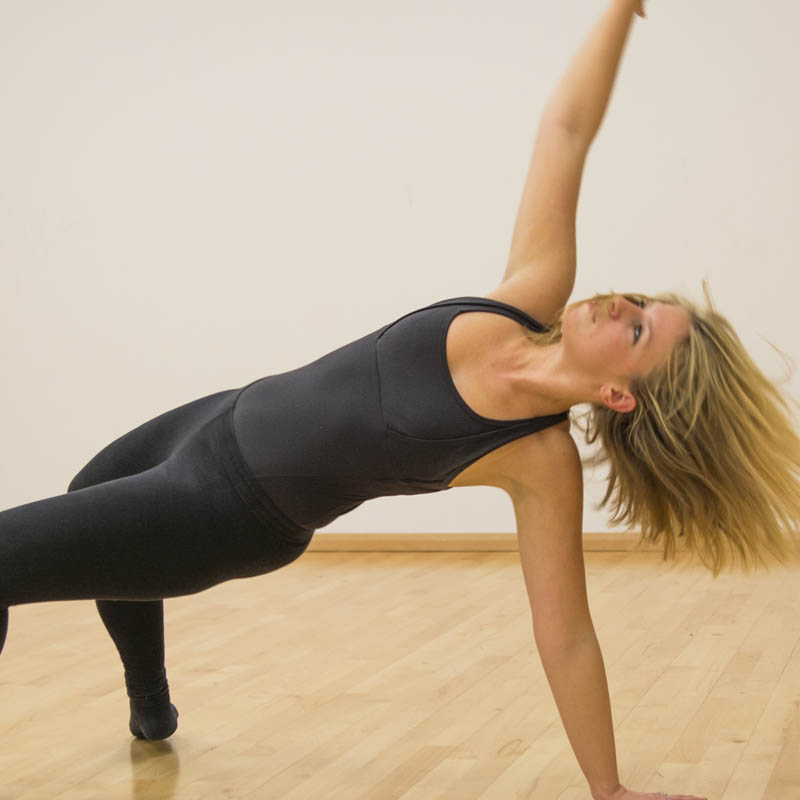
Which dance?
Modern Jazz dance, for more than 25 years! I took lessons for a very long time in a school, then in an association, and even as part of my business studies. I discovered lots of different worlds, from pure jazz to contemporary dance to courses with more African influences, which also allowed me to orient myself and see what I really liked.
Why?
First to express my creativity. Then, for the feeling of fullness and good fatigue: when I dance, I'm in my own world! This is my moment of relaxation and femininity. Finally, I love the team spirit of Modern Jazz, meeting up with friends, the notion of sharing, the bodies in sync, which create harmony. You can tell when a group is united on stage. At the end-of-year shows, people get together to present a beautiful dance tableau to their loved ones. The choreography, which has been worked on for a year, takes on its full dimension when you add the costumes, the make-up and the audience.
For who?
It is a discipline open to all even if it revolves around specific levels. There is no age or physical criteria. Above all, it requires rhythm and coordination.
What kind of jewelry can you wear for the dance?
On the right arm, I like to mix bracelets from the Les Cadettes collection with Les Georgettes cuffs. I adapt according to what I wear. On the left arm, I always wear the same pieces of jewellery and never take them off!
Which dance?
Modern Jazz dance, for more than 25 years! I took lessons for a very long time in a school, then in an association, and even as part of my business studies. I discovered lots of different worlds, from pure jazz to contemporary dance to courses with more African influences, which also allowed me to orient myself and see what I really liked.
Why?
First to express my creativity. Then, for the feeling of fullness and good fatigue: when I dance, I'm in my own world! This is my moment of relaxation and femininity. Finally, I love the team spirit of Modern Jazz, meeting up with friends, the notion of sharing, the bodies in sync, which create harmony. You can tell when a group is united on stage. At the end-of-year shows, people get together to present a beautiful dance tableau to their loved ones. The choreography, which has been worked on for a year, takes on its full dimension when you add the costumes, the make-up and the audience.
For who?
It is a discipline open to all even if it revolves around specific levels. There is no age or physical criteria. Above all, it requires rhythm and coordination.
What kind of jewelry can you wear for the dance?
On the right arm, I like to mix bracelets from the Les Cadettes collection with Les Georgettes cuffs. I adapt according to what I wear. On the left arm, I always wear the same pieces of jewellery and never take them off!
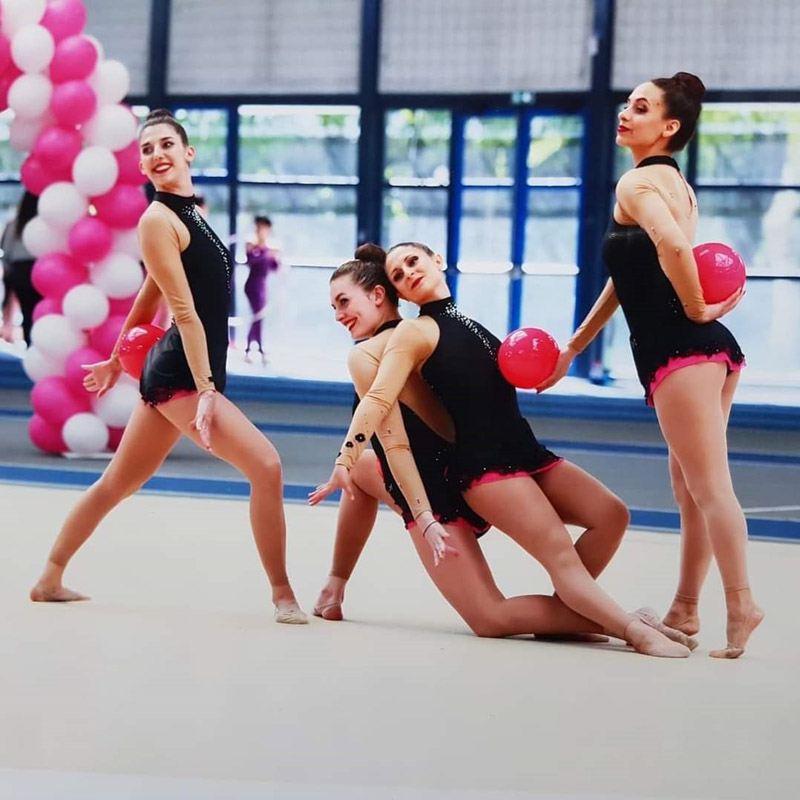
Which dance?
Rhythmic Gymnastics. I have been doing it for over 20 years and have been teaching it as a coach for the past 4 years. It is both a technical and artistic discipline that combines dance with what are called "apparatus": ribbon, rope, ball, hoop and clubs. It can be performed in sports clubs, more often in competition than for leisure, usually in teams of 5 people. Rhythmic Gymnastics is very supervised and follows rigorous criteria which take up those of gymnastics and classical dance. Represented at the Olympic Games, it is subject to the International Gymnastics Federation's scoring code.
Why?
When working as a team, the choreographies represent an eternal renewal, because they are always created with new compositions: ball - hoop, ribbon - rope, hoop - ribbon, etc. It's infinite! We never get bored. That's why I teach it now. It is a sport of sharing that brings joy, laughter and pleasure. I thrive in contact with children. It's a very human profession in which we transmit to others. Gradually, we see the progress of the students. If you want your children to practice a sport, introduce them to RG because it is rich in learning: management of space, memorization of sequences, dexterity, flexibility, rigour, synchronization, manipulation of objects, assimilation of a tempo, etc.
For who?
To reach a good level, you have to start very early, around 5 or 6 years old. Flexibility can be learned, but it requires a lot of physical investment. Attendance must be faultless because the slightest absence of a person penalises a group since there are exchanges of balls, ribbons, etc. When practising in competition, team spirit is very important: the sequence must be meticulously executed in front of the judges. The team has to be perfect, which of course creates a very strong bond, because everyone gives their all. There is a lot of support. The audience is always there during a competition. Each group cheers for one another.
What kind of jewelry can you wear for the dance?
In RG, during the end-of-year show - unlike training and competitions where they are forbidden - one can wear one's jewellery freely, to adorn the sequinned leotards! On this occasion, I love to wear my Perroquet Cuff from the Les Coutures collection.
Which dance?
Rhythmic Gymnastics. I have been doing it for over 20 years and have been teaching it as a coach for the past 4 years. It is both a technical and artistic discipline that combines dance with what are called "apparatus": ribbon, rope, ball, hoop and clubs. It can be performed in sports clubs, more often in competition than for leisure, usually in teams of 5 people. Rhythmic Gymnastics is very supervised and follows rigorous criteria which take up those of gymnastics and classical dance. Represented at the Olympic Games, it is subject to the International Gymnastics Federation's scoring code.
Why?
When working as a team, the choreographies represent an eternal renewal, because they are always created with new compositions: ball - hoop, ribbon - rope, hoop - ribbon, etc. It's infinite! We never get bored. That's why I teach it now. It is a sport of sharing that brings joy, laughter and pleasure. I thrive in contact with children. It's a very human profession in which we transmit to others. Gradually, we see the progress of the students. If you want your children to practice a sport, introduce them to RG because it is rich in learning: management of space, memorization of sequences, dexterity, flexibility, rigour, synchronization, manipulation of objects, assimilation of a tempo, etc.
For who?
To reach a good level, you have to start very early, around 5 or 6 years old. Flexibility can be learned, but it requires a lot of physical investment. Attendance must be faultless because the slightest absence of a person penalises a group since there are exchanges of balls, ribbons, etc. When practising in competition, team spirit is very important: the sequence must be meticulously executed in front of the judges. The team has to be perfect, which of course creates a very strong bond, because everyone gives their all. There is a lot of support. The audience is always there during a competition. Each group cheers for one another.
What kind of jewelry can you wear for the dance?
In RG, during the end-of-year show - unlike training and competitions where they are forbidden - one can wear one's jewellery freely, to adorn the sequinned leotards! On this occasion, I love to wear my Perroquet Cuff from the Les Coutures collection.
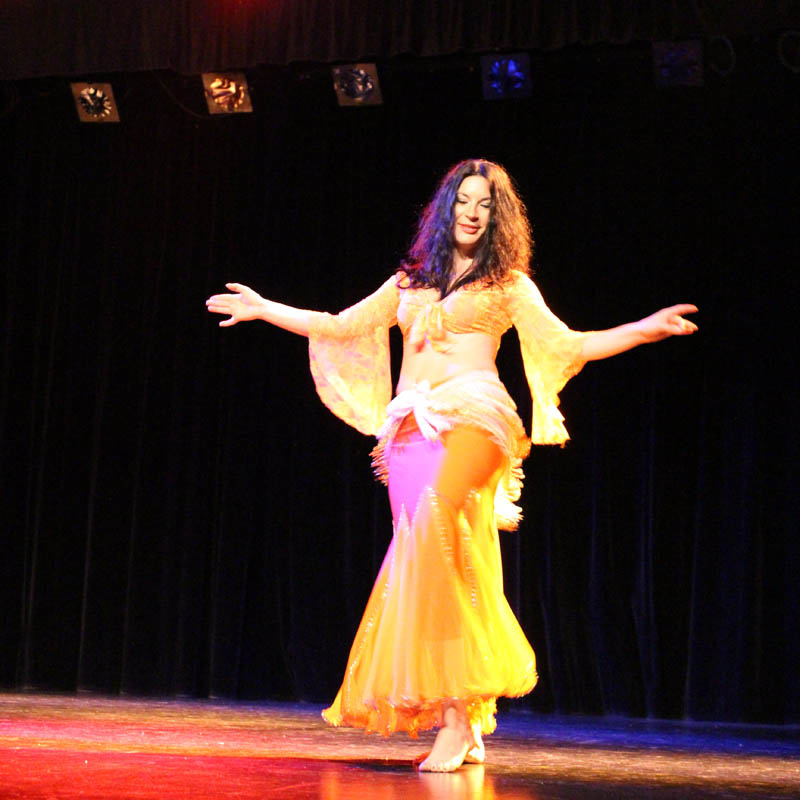
Which dance?
I have long practised Oriental Dance, a real passion for almost 10 years. I gave performances throughout the region of Tours, for works councils and birthdays. On weekends, when I was a student, I also danced in a restaurant, which allowed me to make some money on the side. It was both a hobby and a job! Then I moved to Paris, and I started Salsa. Group lessons were held on Saturday evenings at an association. I made friends with the members of this group, and above all, met the man who would become my husband!
Why?
The two types of dance that I have practised allow me to feel good in my body and in my head, to discover new people, new places, to open up to others but also to myself, to gain confidence and to express my femininity. When we dance, we reveal another side of ourselves that we don't show in our daily life, in our professional sphere as well as with friends and family.
For who?
Anyone can practice Oriental Dance, as long as you have some flexibility, know how to be graceful and dissociate the different parts of your body to move only one. In Salsa, you have to know how to manage the notion of relationship with the other, because it is a couple's dance. You have to know how to be coordinated, let yourself be guided and trust each other.
What kind of jewelry can you wear for the dance?
In Oriental Dance, the more imposing the piece of jewellery, the better! For a show, I often wore hoop earrings. I also accumulated bracelets and took the opportunity to wear the fancy earrings and cuffs that my mother bequeathed to me. They lent themselves remarkably well to costumes. When dancing Salsa, we had to choose discreet jewellery that did not interfere too much with the movement.
Which dance?
I have long practised Oriental Dance, a real passion for almost 10 years. I gave performances throughout the region of Tours, for works councils and birthdays. On weekends, when I was a student, I also danced in a restaurant, which allowed me to make some money on the side. It was both a hobby and a job! Then I moved to Paris, and I started Salsa. Group lessons were held on Saturday evenings at an association. I made friends with the members of this group, and above all, met the man who would become my husband!
Why?
The two types of dance that I have practised allow me to feel good in my body and in my head, to discover new people, new places, to open up to others but also to myself, to gain confidence and to express my femininity. When we dance, we reveal another side of ourselves that we don't show in our daily life, in our professional sphere as well as with friends and family.
For who?
Anyone can practice Oriental Dance, as long as you have some flexibility, know how to be graceful and dissociate the different parts of your body to move only one. In Salsa, you have to know how to manage the notion of relationship with the other, because it is a couple's dance. You have to know how to be coordinated, let yourself be guided and trust each other.
What kind of jewelry can you wear for the dance?
In Oriental Dance, the more imposing the piece of jewellery, the better! For a show, I often wore hoop earrings. I also accumulated bracelets and took the opportunity to wear the fancy earrings and cuffs that my mother bequeathed to me. They lent themselves remarkably well to costumes. When dancing Salsa, we had to choose discreet jewellery that did not interfere too much with the movement.
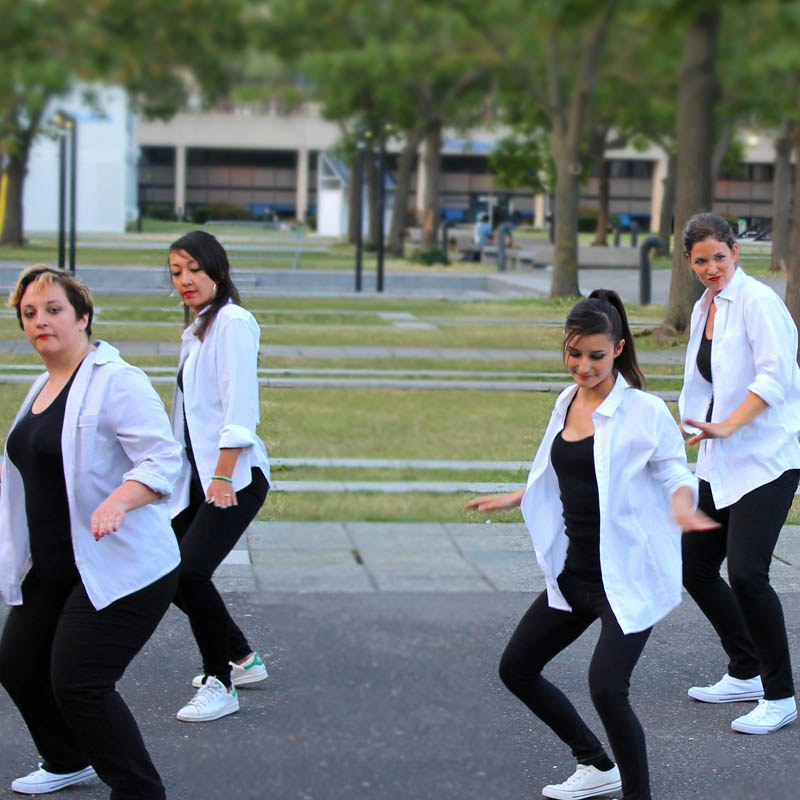
Which dance?
Street Jazz, which is similar to hip-hop mixed with Modern Jazz, and which is danced to different musical genres according to the style of the teacher: pop, RnB, funk, electro, etc. It is practised in a group in a room or in the street (hence its name)! Twenty years ago, when I took my first lessons, this discipline still seemed new. Sometimes we danced on weekends in performance halls, campsites, and occasionally even cinemas. Today, I continue to practice in an association with which we organise an end-of-year show in a theatre or even outside.
Why?
Freedom, well-being and team spirit. When I'm on stage, it's like I'm someone else! My anxieties are gone. I smile and fully appreciate the moment. In a group course, we forge strong links with others, since we come together around a common passion. You can feel it in the timing of the movements. There is more than team cohesion, there is a kind of solidarity. That's why I love the end-of-year shows so much: we stick together and put all our energy into the dance steps we've been learning for almost a year. We seize every second together, we live in the moment.
For who?
There are courses for all levels: beginner, intermediate, advanced, etc. Having practiced another style of dance beforehand allows you to execute the movements with speed, precision and attitude. Street Jazz is explosive!
What kind of jewelry can you wear for the dance?
During a show, you can wear a lucky charm such as a ring, bracelet or even a pendant. The jewellery in the Essentielles collection, for example, can be worn with anything because they enhance any outfit.
Which dance?
Street Jazz, which is similar to hip-hop mixed with Modern Jazz, and which is danced to different musical genres according to the style of the teacher: pop, RnB, funk, electro, etc. It is practised in a group in a room or in the street (hence its name)! Twenty years ago, when I took my first lessons, this discipline still seemed new. Sometimes we danced on weekends in performance halls, campsites, and occasionally even cinemas. Today, I continue to practice in an association with which we organise an end-of-year show in a theatre or even outside.
Why?
Freedom, well-being and team spirit. When I'm on stage, it's like I'm someone else! My anxieties are gone. I smile and fully appreciate the moment. In a group course, we forge strong links with others, since we come together around a common passion. You can feel it in the timing of the movements. There is more than team cohesion, there is a kind of solidarity. That's why I love the end-of-year shows so much: we stick together and put all our energy into the dance steps we've been learning for almost a year. We seize every second together, we live in the moment.
For who?
There are courses for all levels: beginner, intermediate, advanced, etc. Having practiced another style of dance beforehand allows you to execute the movements with speed, precision and attitude. Street Jazz is explosive!
What kind of jewelry can you wear for the dance?
During a show, you can wear a lucky charm such as a ring, bracelet or even a pendant. The jewellery in the Essentielles collection, for example, can be worn with anything because they enhance any outfit.
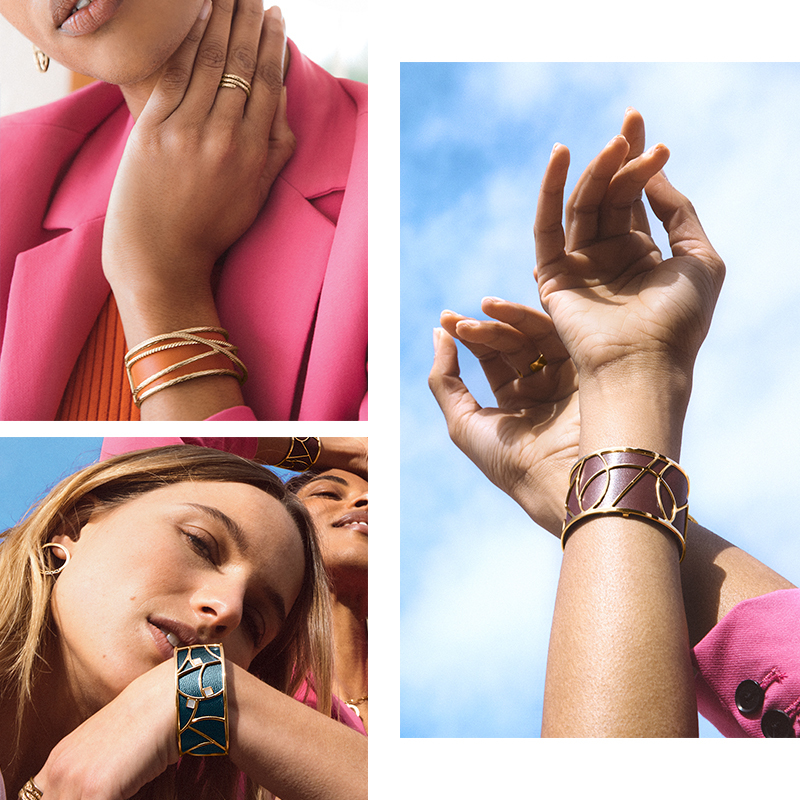
DANCE WITH LES GEORGETTES
Until you find the style that suits you, we invite you to follow the movement by embracing the new gems of our Autumn-Winter 2022 collection entitled "Graphic Choreo". Do you prefer the VALSE, SWING or CHARLESTON? Why not find out…
DANCE WITH LES GEORGETTES
Until you find the style that suits you, we invite you to follow the movement by embracing the new gems of our Autumn-Winter 2022 collection entitled "Graphic Choreo". Do you prefer the VALSE, SWING or CHARLESTON? Why not find out…